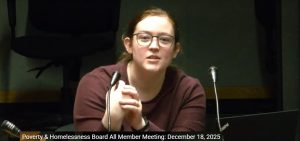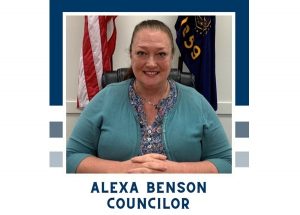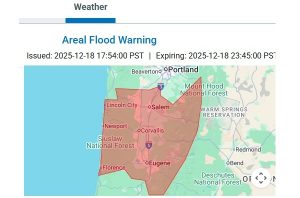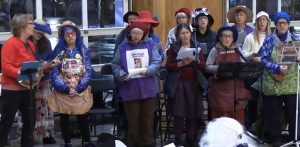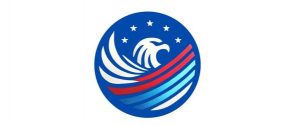FUSEE: Community wildfire preparedness must become part of our culture
7 min read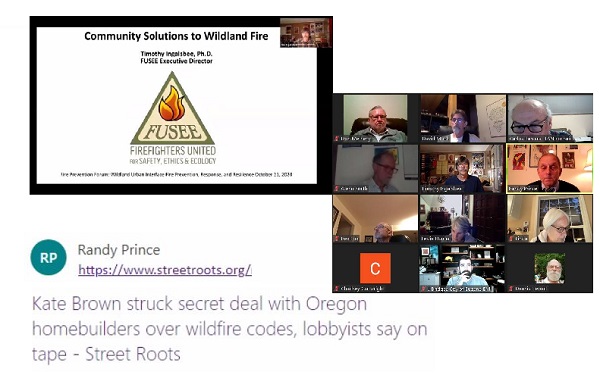
Eugene needs to practice evacuations. At the all-neighborhood preparedness meeting in October, wildland firefighter and FUSEE Executive Director Tim Ingalsbee.
[00:00:09] Tim Ingalsbee: Communications, evacuation routes, planning—we really have to take that on as a community. We just cannot rely on federal / state agencies to be here to defend and protect, and we’ve really got to do a better job ourselves.
[00:00:26] Labor Day 2020, the fire community knew that red flag event was coming. We were all kind of bracing for it, though what happened that day far exceeded anyone’s living memory of what fire is capable of doing, especially when you’re on the west side of the Cascades. I was blown away.
[00:00:48] So we were not fully prepared, mentally or physically. Most of our firefighting resources had been sent to California in 2020. They just had skeleton crews left behind. Or those who were here, were exhausted. So we weren’t fully prepared, but we really failed to communicate that to communities.
[00:01:08] And the first wave that caught that continental air mass of warm, dry, wind event was this little town in rural eastern Washington, and it was razed, and I remember thinking, ‘Whoa, that was the canary in the coal mine.’ And we really, really should have just been blaring to everybody: ‘Hunker down.’
[00:01:30] The red flag warnings that we rely on in the fire community that help keep firefighters safe, help guide some of our tactical operations—that has to be shared with the community in a way that’s effective in mobilizing preparedness, mobilizing at least mental preparedness and action.
[00:01:50] We have to bridge that gap between what we know and rely on in the fire management community and what the local communities get and receive.
[00:01:59] Since 2020, just watching the local weather report, they are doing a better job. Part of your nightly news is a red flag warning. You get that on the TV and that’s encouraging. But what does that mean to people? What should they do with that information? There I think we can do a better job and have to do a better job.
[00:02:18] And communications too, consistent breakdown in emergency communications. I remember just a few years ago, fast-moving fires in Eastern Washington were burning down the power lines and the communication towers, severing communications and one town didn’t know that the fire was coming— Sheriffs were flying in their cars with their loudspeakers, warning, ‘Evacuate now.’ It was like Paul Revere, riding on: ‘The red flames are coming, the red flames are coming!’ And that was a huge wake-up call.
[00:02:52] And there have been efforts to bolster communications, but we need a backup plan because again, an east wind event could blow a tree limb into a power line in the South Hills (of Eugene) and with a good, strong wind and a steep slope, it’s off to the races.
[00:03:08] Carlos Barrera: I’m wondering where we can get trainings on how to fight urban fires, when there’s no water in the mains.
[00:03:16] Tim Ingalsbee: That’s a good question. There is probably a role for community groups and volunteers to get that kind of training and provide that kind of protection because it’s quite typically it’s after the initial wave of a wildfire has passed that homes start to ignite.
[00:03:35] People imagine that homes explode in flames and that’s just not how it happens. It’s usually a tiny little ember smoldering, seeps into the roof. It’s usually a slow process coming. And at that point it can be effective for citizens to put out embers with garden hoses or swatters or whatever.
[00:03:57] When we have a mass evacuation of a whole community, well, there goes all the labor force to deal with those kinds of ignitions. So somehow we have to develop that as a way of life, particularly for rural communities. They must get the tools and training and have the people willing to volunteer to be home defense in case of wildfire.
[00:04:20] But that, again, is the last thing that we should do. The first thing is preparing our community so we don’t ignite at all. And that is where, get those kids in there pruning the shrubs hanging underneath the eaves and raking up the needles and sweeping off the roofs and doing that hard work that is going to need to be done every year as a matter of living responsibly in a fire environment.
[00:04:47] So that’s where I’d rather see communities put more of their focus in, instead of fire brigades in case that event happens, is more like annual cleanup crews helping to reduce combustibles and ignition sources, right there within the home ignition zone.
[00:05:09] Randy Prince (Eugene Neighborhoods’ Preparedness Network): Here’s a question that Tyler Stewart put into the chat: ‘Do you have advice for getting the attention of our local leaders? It’s in their radar, but they’re having to juggle many priorities.’ Tim, what gets their attention and action?
[00:05:23] Tim Ingalsbee: In reaction to Labor Day Firestorms 2020, we had that massive omnibus bill, SB 762, and a lot of different bills bundled up into one big bill. And FUSEE—my organization—sponsored a bill to create the, what we called it, ‘Community Wildfire Protection Corps,’ that would put youth crews to work right there in the home ignition zone, reducing the wildfire risks, particularly for elderly and disabled and low-income people in rural communities.
[00:05:53] And that bill passed and it actually got funded with 10 million dollars. It got renamed the Oregon Conservation Crew, and right now there are youth busy at work all over the state: Up the McKenzie Valley, down in southwest Oregon, and over in near Bend, doing that very work. And it’s a model program I think our state could export to other states in the west because it really is going to be effective.
[00:06:20] I think we should ensure that that program is sustained and the funding put in, because to me it’s one of the most practical and effective applications, more than, ‘Let’s buy new air tankers and let’s crank out more maps, you know, with red splotches and fire.’
[00:06:40] Let’s get real and do the hard work that is just perfect for young, strong bodies, particularly those in rural communities who lack other job opportunities. And so that, I think, that’s an example where our leaders heard from us and should hear from us again.
[00:06:57] Randy Prince: Jeremiah Bridges, emergency management analyst with the city of Eugene, is here in the meeting. How do the neighbors—what can they do that will spark some action?
[00:07:10] Jeremiah Bridges (Emergency Management): Back up, you know, five years before this, there was fire, there was wildfire. Nothing to the extent that it’s been the past three plus years, four plus years. It’s been unprecedented and we’ve learned an incredible amount.
[00:07:21] So I, myself, with the emergency management team, with partnership with my emergency manager now, I headed up and created the Neighborhood Radio Communication Response Guide. We just released it, the end of 2021. This is for events where we don’t have communication. The ham radio system and the group there is incredibly large and span the entire Lane County. So that is one area that I would highly recommend.
[00:07:43] Our CERT program really, it has become something really incredible.
[00:07:47] The one thing that I do notice is that we lack a lot of younger generations. We’ve been in talks with U of O that has been interested in starting a CERT program for themselves.
[00:07:56] I worked solely on a grant to update that PodRunner uplink that connects to a satellite and will provide data and Wi-Fi for individuals. So now we will have phone service on it. We also will have one stationed out at the airport, because that’s going to be a point of importance for us if something happens.
[00:08:12] So we’re taking active steps. We have plans now for fire evacuation sites. We have very close relationships with a lot of the organizations that, like Red Cross, that would be available to stand up in a moment’s notice.
[00:08:24] Lena Houston-Davisson: I lived next door to where Civic Stadium used to be. And when that fire happened, we had embers raining on us. I had embers raining on my house, large ones. And because I had neighbors here and we spent a lot of time putting out small fires, all around our neighborhood, so I could see how easily that could happen.
[00:08:45] One of ’em was in the gutter. One of my neighbors reminded me to check the gutters, and I had smoldering embers in my gutter.
[00:08:54] Randy Prince: Another factor in this (I point out) is, the people who just don’t keep up on some of the conditions, everything they’re getting is national: ‘I don’t have a TV. I don’t read that paper.’ And if there was a fire warning that affected a particular valley really close to us, perhaps they could miss it.
[00:09:14] Tim Ingalsbee (FUSEE): That is a recurring problem, when the wildfire comes, razes a neighborhood or community, and then you get newcomers coming in with no sense of history. No even awareness that fires are an issue. (Yeah.) You know, it’s all new to them. And so doing all that kind of community fire education, fire planning, preparedness, it’s just not a one-time thing. It’s got to be repeated, it’s got to be sustained and it’s got to become part of our culture, you know, our way of life and something we value.
[00:09:47] John Q: To help build that culture of local preparedness, contact your local neighborhood association.
